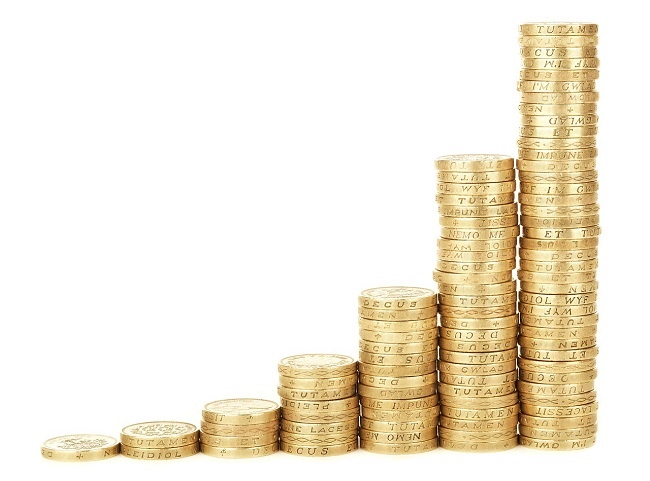In 2017, Paris Saint-Germain signed Brazilian football superstar Neymar for a record-breaking €222 million (about £197 million). It’s a lot more than the likes of Bristol City’s Bobby Reid, who they sold to Cardiff for £10 million. But if you compare the two on their scoring record alone (strikers, after all, are there to score goals), Reid looks like the better player, with 19 goals at Bristol City compared to Neymar’s 13 at Barcelona in the season before their respective moves.
We’re being somewhat facetious, of course. The value of players, we know, comes down to more than one figure: it’s influenced by age, skill, previous experience, potential, the sheer value of their name and more. The point is, value cannot be boiled down to one metric.
Similarly, a business’ value comes down to more than just profit. If you want to sell your business, you have to build value and show the potential beyond the raw numbers involved. And while a proverbial Bobby Reid will never be a metaphorical Neymar, with great marketing, you can significantly increase your business' value so it's Champions League, rather than Sunday League, quality.
That’s what this new series is all about. How can marketing help you build up your business so that it sells as well as it can? To start with, we have to talk about the basics: how your business is valued against others in the industry, and where you can start looking to build more business value. In a word: benchmarking.
Multiples: how business value is calculated
The traditional rule-of-thumb method for valuing a business is the multiplier, in a calculation that looks like this:
Net profit of business times Multiple of earnings for the sector = Value of business
The multiple is more art than science. It will vary depending on industry, trends in the market, company size, what assets the business has available, and the business’ potential independence from the owner - to name but a few factors.
Most industries do have a standard multiplier - companies might usually sell for 2x or 4x or 10x their net profit - but whether your business will sell for that much is up for debate.
For one thing, net profit isn’t always the right figure to start with: adjusted net profit, which takes into account items and adjustments that won’t be relevant to new owners, might give a more accurate picture of value. Directors’ costs, fees paid to non-executives, exceptional bad debts or one-off costs can all find their way back into the business’ true value.

For another thing, owners tend to over-value their businesses, because entrepreneurial management style has a significant impact on operating costs and adjusted net profit. Small to medium business owners often put costs through the business that a corporate buyer wouldn’t have to, and they often pay themselves below the market rate for the leadership roles that they fulfil.
For yet another thing, multiples aren’t always accurate. This year’s accepted multiple for a given sector may be skewed by particularly large sales or especially conservative buyers. Smaller businesses often sell for less than larger ones - they can struggle to crack the 2.5 multiple, even if 4.9 is the industry norm.
Essentially, this rule of thumb calculation can’t really be trusted, and each business has to be valued on its own terms. That’s why you need to prove what your business is worth, in comparison to the industry at large, rather than simply applying the industry’s figures to your own.
Benchmarking: how to find and improve the value of your business
Benchmarking your business against others in your industry helps you understand how your business compares in terms of value. While there are hundreds of ways to value a business, which review factors from net assets to projected cash flow, there are a handful of factors where marketing can provide a particular boost.
- Market share: the raw number of customers you’re reaching and selling to on a regular basis
- Market influence, or share of voice: you may not be selling the most but are you setting the trends and leading the thoughts?
- Brand positioning (including price position) - the way your brand is perceived by customers and competitors will influence both profitability and the room you have in which to innovate
- Profitability, compared to the industry standard for similarly sized businesses.
Marketing has the potential to give all these factors a boost, but marketing is not a magic button: a marketing campaign isn’t guaranteed to add value to your business all by itself. Buyers want to see hard figures: the provable return on investment (ROI) that shows how much value your marketing spend delivers. If £1 on marketing generates £5 in profit, marketing directly increases the overall value of your business; To demonstrate this ROI you must ensure your analytics and tracking is set up correctly, and there are two marketing metrics that every business should measure.
- You may also like: Marketing mythbuster #5: You can’t measure ROI in digital marketing
Potential improvements won’t sell your business. You’re basically telling buyers, “spend money, do work, and it might pay off.” The business needs to be doing that work, making those investments, and seeing the bottom line return. That’s why you need to start the sale process by making and implementing growth plans.
The best basis for these is a SWOT analysis: describing the Strengths, Weaknesses, Opportunities and Threats of your current operations. Breaking down elements of your business into these categories will show you where to direct your efforts to ensure maximum value. You’ll be able to make the most of, say, a market-disrupting product that’s brought your business to the point where selling up has become viable, and you’ll be able to plan around your lack of intellectual property and brand equity, making these steps on the road to saleability.
By knowing where you are in relation to the industry averages, you can establish the true value of your business, bereft of best guesses and potentialities. An analysis based on those benchmarks and your business’ current performance will identify the key areas to work on in order to increase the value of your business - and set you in good stead when it’s time to sell.




